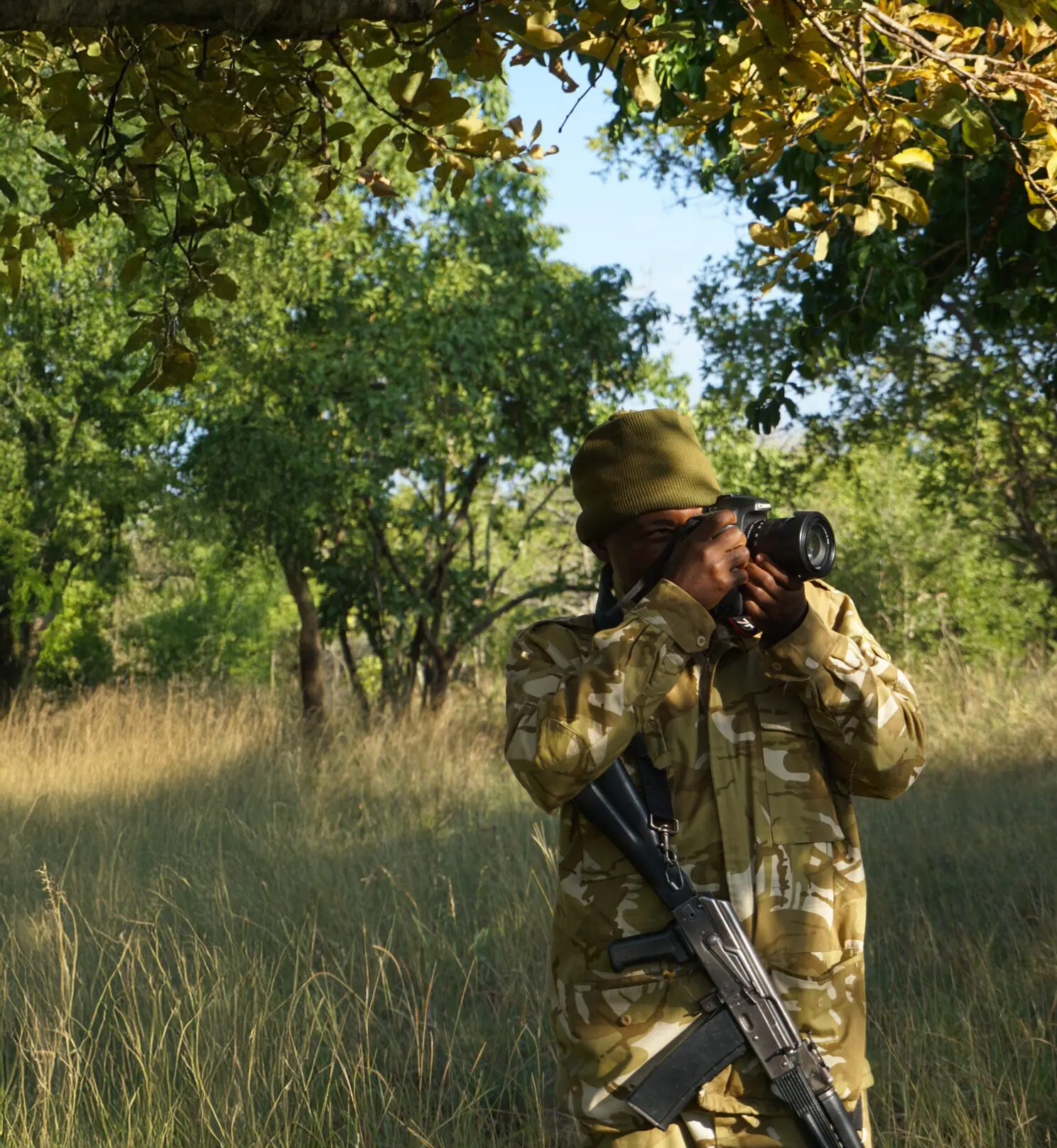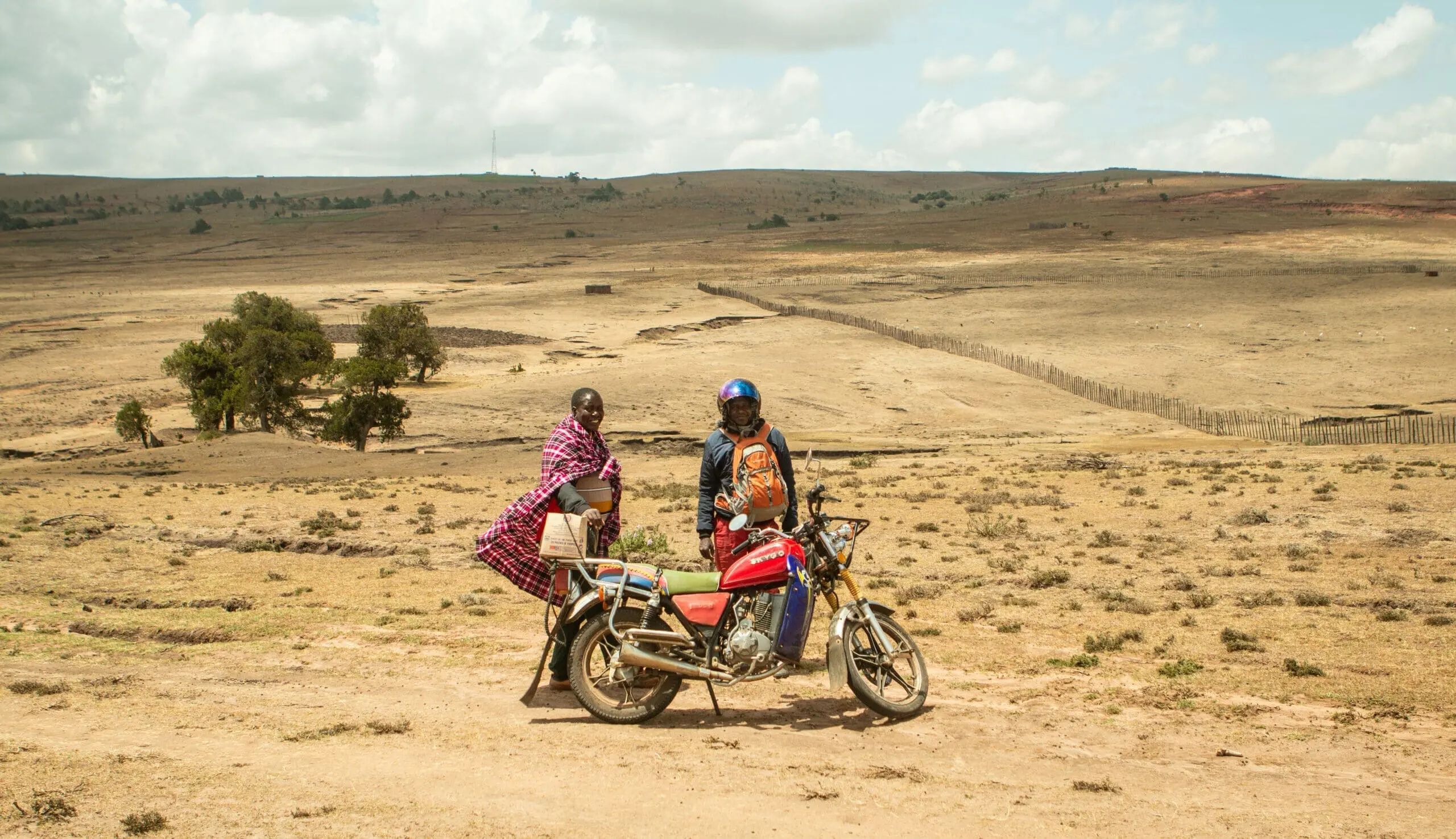Traces of strife in 1896: a time of power and danger
During the Scramble for Africa – the colonial race for Africa – numerous European powers sought to control as much of the African continent as possible, and Great Britain was no exception. With the aim of establishing a direct connection to the fertile land around Lake Victoria, the British began constructing a railway line between the coastal city of Mombasa and Kampala in 1896. This link to Uganda provided them with the opportunity to transport both soldiers and goods, strengthening their grip on Lake Victoria – the source of the Nile. Due to a shortage of local labor in the sparsely populated Kenya at the time, a staggering 32,000 Indians were employed in the construction of this immense project.
'Lunatic Express': the workers had to lay rails in Kenya over mountains, through valleys, and swamps, while deadly animals lurked nearby.
During the construction of the railway, it quickly earned the nickname 'Lunatic Express': the workers in Kenya had to lay tracks over mountains, through valleys, and swamps, while life-threatening animals lurked nearby. As if that wasn't enough, tropical diseases added to the mix, bringing about misery and hardship! It's no surprise then that during this feat of engineering (which lasted five years), almost 2,500 people lost their lives due to accidents, illnesses, attacks from aggressive Masai warriors, and encounters with wild animals.
Terror of Tsavo: Bloodthirsty lions
During nine months of construction, the workers in the vicinity of Tsavo inland were terrorized by two male lions. Night after night, Indian laborers were dragged from their tents and devoured as prey. The camp quickly gained the sinister nickname "the human butcher shop"... gruesome! Reportedly, 135 workers were brutally murdered before project leader Colonel Patterson finally succeeded in his mission to shoot down the lion pair.
Normally, humans are not on a lion's menu. Therefore, there are several theories attempting to explain why these bloodthirsty animals attacked the workers. Some believe that humans were favored prey for these lions due to the proximity of the slave route. Along this route, dead, sick, or injured slaves had long been easy targets. Others attribute the lions' behavior to an infected tooth: humans might have been easier for one of the lions to consume than its normal prey.
Fast forward: How is the train system in Kenya doing now?
After the completion of the construction, most Indians returned to their homeland, but around 6,700 people decided to stay in Kenya, forming an Indo-African community. Their influence is clearly visible in the country's culinary scene: hello samosas and chapatis! After decades of passenger and freight transportation, the Uganda Railway was neglected following Kenya's independence in 1963. Despite the poor condition of the rails and extremely unreliable travel times, this train remained a popular mode of transportation among tourists due to the authentic Kenyan charm hidden in the uncertainty of the journey. In 2016, the journey from Nairobi to Mombasa took a full day (24 hours, a new definition of 'taking it easy!'), while it only took 12 hours in the 1980s. Additionally, there was a significant decline in freight transportation.
All things must come to an end... in April 2017, the story of the Lunatic Express concludes for train travelers.
The end: in April 2017 marked the conclusion of the era of the Lunatic Express for train travelers. Despite its rather somber ending, the railway is still regarded as one of Kenya's greatest engineering achievements of the past century. Every piece of it was erected with blood, sweat, and tears (and unfortunately, quite a few casualties...). Moreover, Kenyans view the railway as an integral part of their national history due to its role in the establishment of their capital, Nairobi.

Nairobi: The birth of a metropole
Nairobi is far from being an old dame yet. At the end of the 19th century, it was little more than a cold and wet supply camp for railway workers. Situated at an altitude of 1,700 meters above sea level, Nairobi was originally a marshy area. The Masai referred to this place as "enkare nyarobi," meaning "cool waters." Not exactly the prime choice for a capital, right? But soon, the place grew into the hub of railway activities; in 1907, Nairobi was chosen as the capital of the British protectorate. Since then, the city has undergone spectacular growth, with significant impact on the entire country. The commissioner of the protectorate hit the nail on the head with his statement: “It is not uncommon for a country to create a railway, but it is uncommon for a railway to create a country.”
This piece of history has not gone unnoticed: Hollywood smelled commercial success here! In the movie “The Ghost and the Darkness” (1996), Michael Douglas takes on this pair of aggressive horror lions. Excitement, sensation and nice and dramatic: highly recommended for your next movie night.
The traffic jungle between Mombasa and Nairobi
As the title of this paragraph suggests, the highway between Mombasa and Nairobi is truly an adventure. Kenyans who think they are Max Verstappen don't make it any less chaotic, and those nighttime matatus full of tourists are also less than ideal... Unfortunately, you can no longer travel with the Uganda Railway, but you can still see it from the brand-new railway being constructed by the Chinese. This new railway is intended to provide a faster and better train connection, running parallel to the old British railway. The route between Mombasa and Nairobi has already been completed; you travel through diverse landscapes and cross the Tsavo National Park. You might even spot lions along the way, but let's hope there are no distant relatives of the man-eating lions lurking! One thing is for sure: this train journey is a fantastic experience and a sustainable alternative to the highway.










